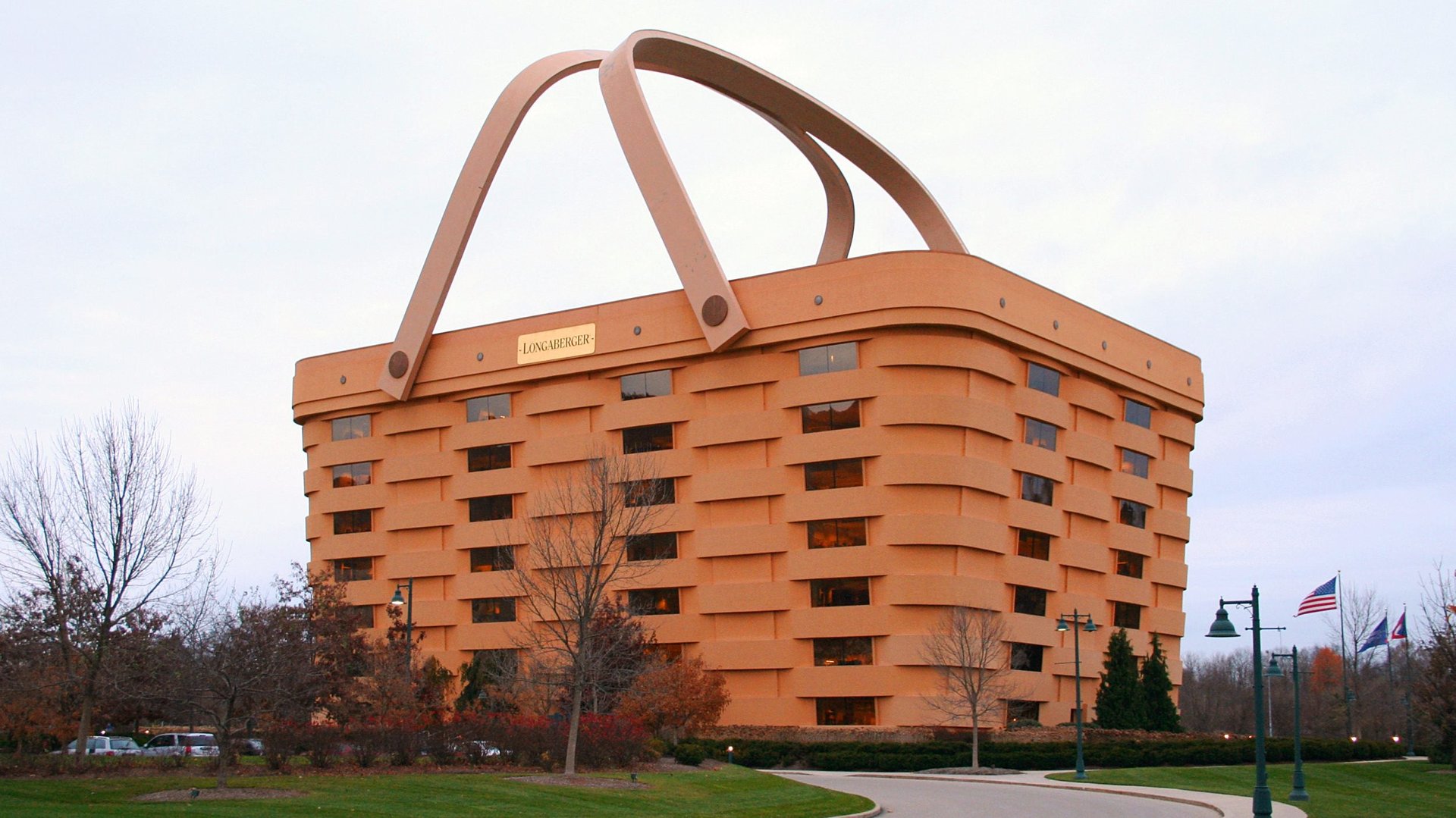Ohio’s giant Bread Basket building finally finds a buyer
It hasn’t been a picnic for the realtors of Ohio’s “Bread Basket” building. The former headquarters of lifestyle brand Longaberger Company, the seven-story building shaped like giant woven basket has been in foreclosure proceedings since March 2017. The beleaguered company’s property tax bill had ballooned to $800,000 and its new owners wanted to get rid of the building.


It hasn’t been a picnic for the realtors of Ohio’s “Bread Basket” building. The former headquarters of lifestyle brand Longaberger Company, the seven-story building shaped like giant woven basket has been in foreclosure proceedings since March 2017. The beleaguered company’s property tax bill had ballooned to $800,000 and its new owners wanted to get rid of the building.
What other corporation would want to conduct business from a mammoth hamper? There were inquiries but no serious offers. After five months in the market, local developer Steve Coon got a deal and paid $1.2 million for the 21-acre property—a fraction of its $7.5 million asking price. He hasn’t disclosed what he’ll do with the popular roadside attraction in the town of Newark. Preservation fans are hoping Coon will bring new life to the building, as he’s done with other landmarks in the state. He’ already registered a company called Historic Newark Basket LLC in time for the December contract signing.
The Bread Basket is a classic example of “mimetic architecture,” a style that represents a building’s function through its shape. Other eye-popping examples include Kansas City Central Library’s parking lot which is shaped like a row of books or the Big Duck, a 20-ft tall waterfowl erected by duck farmer to sell his produce. Popularized by pun-loving Americans, the novelty buildings are local landmarks and serve as advertisement for its owners.
Longaberger’s version is a steel and stucco version of its best-selling product: the Medium Market Basket. Its late founder David Longaberger spent $30 million to erect the 180,000 sq. ft edifice, which seemed like a reasonable expense for the company that was valued at $1 billion at its peak. He spared no expense to achieve a faithful replica: He approved a structure 160 times the size of a normal-sized basket; the heating elements were hidden inside two 75-ton handles and near its “lid” were 25-foot gold leaf painted plaques with the Longaberer’s tag.
The basket’s interior was less literal: There was a large atrium with a grand piano, a 142-seat auditorium, polished wood staircases, fancy marble floors, and formal pendant lights. About 500 employees moved into the capacious hamper when it opened in December, 1997.
Many Longaberger employees loved working in the goofy building. “It’s hard to take life too seriously when you work inside a basket!,” said an employee to the Observer’s Aditya Rengaswamy. “As a society, we should do more things that are purely silly and fun. There will always be work to be done, but fun opportunities aren’t always around.”
Longaberger occupied their custom headquarters for less than 20 years. With the taste for 19th c-style wood baskets waning, it suffered a series of financial setbacks leading to its acquisition by JRJR Networks (formerly Computer Vision Systems Laboratories Corp) in 2013. Longaberger vacated the building in July 2016 and the remaining employees scrounged for desks in its factory in a neighboring town.
“The Big Basket is like the St. Louis Arch,” remarked Longaberger’s former CEO Jim Klein last year when the foreclosure proceedings began. Wistfully, he said he hoped the roadside attraction will make it to the US National Register of Historic Places. The Columbus Dispatch reported last year that realtors considered taking off the handles and evening out the sculptural façade, realizing that it would be difficult to find a buyer to the unusual architecture. They pitched it to hotels, universities, retirement homes, and even as a very large and unusual private mansion.
Longaberger’s headquarters sparked a succession of basket-shaped structures in the Ohio. The company also built an enormous wicker picnic basket in Dresden, an extra large easter basket near Lake Eerie, and a 29-ft basket with monstrously large apples in Frazeysburg.